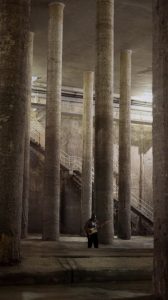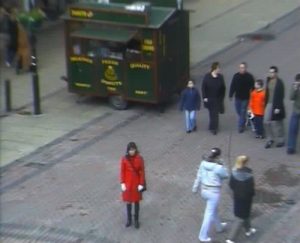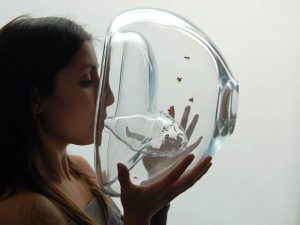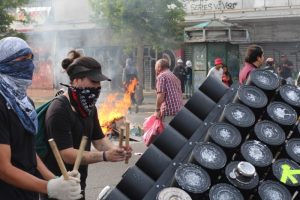Over the past year, i’ve spent an impressive amount of time ogling a blog called Variable_environment. It had all the key ingredients that get my attention: pictures (many, lavish, big, most of them snapped by Milo Keller), inspiring collaborators (including architect Philippe Rahm, multimedia designer Ben Hooker, researcher and designer Rachel Wingfield and architect Christophe Guignard), mini robotic guest stars, and great content. The blog posts document a fascinating research project called Variable environment/ mobility, interaction city & crossovers. The project starting point is the fact that our living environment and the way we live have tremendously changed over the past few decades. The postmodern city made of signs and infrastructures that Robert Venturi and Denise Scott Brown have described in the ’70s in their book Learnings from Las Vegas, have been progressively “enhanced” by new layers: more signs, spaces and objects, arrival of new technologies, increasing mediation of our relationship to space, intensification of transport.
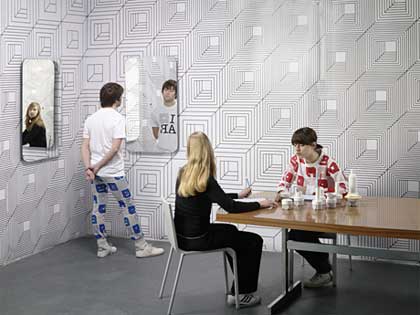 Variable environment/ is a research project that explores the new challenges faced by our living environment, focusing on interaction design as well as architecture and environment design.
Variable environment/ is a research project that explores the new challenges faced by our living environment, focusing on interaction design as well as architecture and environment design.
An activity report has been recently published that details the Variable_environment/ project. Selected images and texts have been entirely drawn from the blog and reorganized to allow a linear reading of the project. You can download a pdf version of it (161 pages mixing french and english.)
I contacted Patrick Keller and asked him to give me the lowdown on variable_environments/. Patrick is responsible for the coordination and art direction of the project but he is also one of the founder of fabric | ch, a studio for architecture, interactions and research, and a teacher at ECAL.
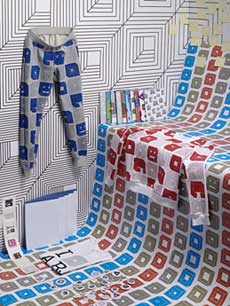 You wrote on the blog that “the interdisciplinary challenges and themes relating to the creation of contemporary environments should be tackled through a collaborative efforts of designers (interaction design, design product and graphic design), architects and scientists. This transversal approach hardly ever happens in Switzerland and Europe.” Why do you single out Switzerland and Europe? Have you seen examples of interdisciplinarity and collaboration between design, architecture and scientists in other countries or continents?
You wrote on the blog that “the interdisciplinary challenges and themes relating to the creation of contemporary environments should be tackled through a collaborative efforts of designers (interaction design, design product and graphic design), architects and scientists. This transversal approach hardly ever happens in Switzerland and Europe.” Why do you single out Switzerland and Europe? Have you seen examples of interdisciplinarity and collaboration between design, architecture and scientists in other countries or continents?
Well, I should first say that I had to single out Switzerland because the project was done in the teaching and research context of Switzerland (the texts in the blog are the same ones that I snail mailed to the experts who funded the research): the Variable_environment/ project was linking the two high-schools of ECAL (Ecole Cantonale d’Art de Lausanne —Arts & Design—) and EPFL (Ecole Polytechnique Fédérale de Lausanne —Sciences, Architecture & Engineering—), which was kind of a new education situation in Switzerland.
But this small country can in fact be considered as a good representative for the rest of Europe though (regarding education in design, architecture and sciences, there are quite good high-schools in Switzerland like ECAL, HGKZ, Accademia Mendrisio, ETHZ & EPFL) and especially because like in most of Europe, art & design disciplines (at the exception of Architecture) are usually taught in different schools, structures and locations (and btw with less money) than the rest of disciplines at university level like humanities, engineering, life sciences, etc.
Christophe Guignard and I did a round trip two years ago for ECAL, visiting lots of schools and universities in Europe and United States to see what kind of collaborations were going on between designers and scientists. So for example there is a clear difference between the way Design is being taught in Europe and in the United States or Canada: most of the big universities in the US (Stanford, Berkeley, UCLA, Harvard, MIT, Columbia, etc.) include Art, Design and Architecture schools on their campuses. This should allow for a common knowledge of the work of each other, a sort of base on which you can start, but it also mainly allow for potential easy collaborations on a daily basis. Of course, it is not because it is possible that people are taking advantage of it… Curiosity is still needed in this context because it is usually not part of any regular teaching cursus at the moment.
So, in a more general way, I should say that no, these kinds of collaborations are unfortunately not so usual yet (but I don’t know the situation in Asian countries which might be different). They still remain more related to the work and initiatives of individuals, but it’s naturally increasing though and will soon become a necessity and an evidence I think.
Architecture is a bit different, it has now a long history of collaboration with engineers: since the modern period and the industrial revolution, it’s teaching has left the art schools and integrated the Universities nearly everywhere. Mainly all good architectural schools (with some few exceptions) are now part of big universities or polytechnical schools. In this sense, what has been done with this particular discipline and its teaching in the early 20th century could serve has a reference for some areas of contemporary design, even if the architectural field should also clearly rethink and instigate its relations to other disciplines now.
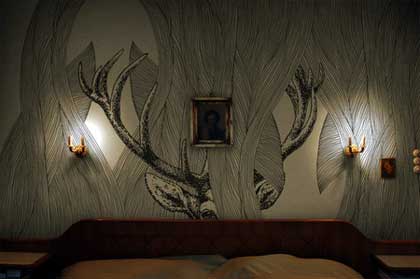 Lunatic Room by Eric Morzier & Camille Scherrer
Lunatic Room by Eric Morzier & Camille Scherrer
Which challenges does such inter-disciplinary element face? Do you think that it would be easy for scientists, architects and designers to find a common language and work in synergy?
I don’t really believe in the model of the “designer-coder” who would be formed in a design or art school. Design and code, these remain two different formations where different skills are needed if you want to reach a high level, unless you are ready to study in high-schools for 10 years to reach a Master level. But on the other side, it’s hard for those disciplines to work together because the rhythm of work is quite different, especially in a research context. So what could be the solution?
Of course, it’s now absolutely necessary that designers understand code and scripting, because design happens also at the level of code nowadays. And in a more general way, it’s important that designers are regularly confronted and include/understand the works of scientists because major transformations of societies are now happening through the applied impact of scientific researches and developments, often without the (critical) input of designers. But I also think that it’s absolutely necessary that each discipline keeps its edge and profile, its own goals (or lets say its own difference) so that collaboration can be rich. And that’s true for any type of collaboration, might it be design and life-sciences, architecture and nanotechnology or whatever. Some collaborations are nowadays experimental (i.e. Architecture and life sciences), some are no more but were it hundred years ago (i.e. architecture and civil engineering that has built most of our contemporary landscape). So, those we need today in the transversal areas we are interested in are designers that understand code/some sciences and engineers that understand design, a common knowledge and then highly creative and critical collaborations of any type between them.
For this, the way we teach and the structure of teaching in Europe should me modified because we will never reach this common knowledge while keeping the high-schools in design and sciences separated as well as their budget so different.
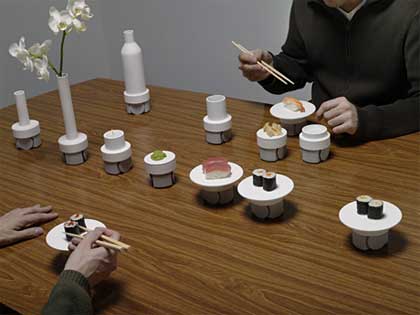 Rolling microfunctions by Patrick Keller, Julien Nembrini, Christian Babski, Julien Ayer and Laurent Soldini
Rolling microfunctions by Patrick Keller, Julien Nembrini, Christian Babski, Julien Ayer and Laurent Soldini
Could you tell us a few words about the AiRtoolkit and in particular about one of its application the “AR ready” project?
The AiRtoolkit project has three facets I would say: first one is the redesign (with interaction design considerations) of a known open source software (ARtoolkit, a marker based augmented reality application), second one are the ” AR ready objects” while third are some uses you could have as an end user with such a software coupled with the “AR ready” objects. Each facet of the project is not so particular in itself. It is when you think about combinations of the three that it gets exciting.
When you think of a technology like the (now old) desktop computer, you usually think and focus on what you see, the screen and its content. You think less about what you don’t necessarily see anymore: the way it has modified your daily working environment. As an exemple, think about the typical office table: the computer has “aspired” many objects into the screen (the famous “office” metaphor): pictures of relatives, music, mail, etc., finally even the table, that has been replaced by your own knees! Most of those objects or supports are now into the “black box”, non material anymore. But what you have “gain” are hundreds of plugs and cables, a whole in the table to make way for them, a “bag” under it to hold them, headphones, remote controls, etc. So to say, a technology could be considered as the thing in itself and all its potential “collateral effects”.
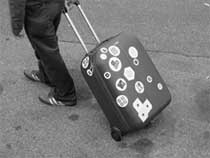
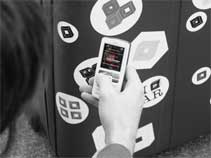
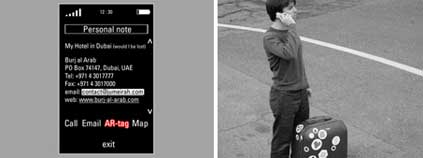 “mnemonic suitcase” with stickers and private text-based information
“mnemonic suitcase” with stickers and private text-based information
“AR ready objects” are about these “collateral effects”: the marker based Augmented Reality technology induces invisible/digital content (usually 3d) that you’ll only see through the live eye of a mobile camera (would it be a cellphone camera or a hi-tech headset), on top of what this camera is capturing. But to see this invisible or “augmented” content, you’ll have to put a visible marker in the physical environment. That’s in fact what we thought was interesting in this technology (beside the possibility to mix the physical and the digital): to put a visible sign to say that there is something invisible, something you can’t see with your eyes and that there is an all new visual and functional level that can only be reached through the vision of your camera. We were interested to examine how such a strange environment might look like visually and redesign or distort many known objects that would use this visual language for cameras. We knew at that time that AR technology without markers was under development, but we thought that keeping the markers was a more interesting approach for the physical environment.
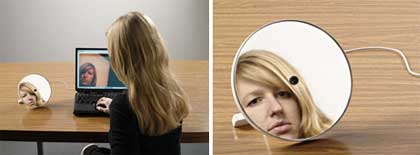 Aude Genton’s (web)cam objects
Aude Genton’s (web)cam objects
Don’t you fear that our environment is getting too techno-mediated?
“Techno-mediated” is a subset of “mediated” and man probably maintains an increasing mediated relation to its environment since the time he built tools, his first shelter or cultivated its first seeds. He has put the natural environment “at a distance” and still tries to format it (or literally “inform” it) according to its needs, even if he fortunately still has to deal with natural conditions due to the limited energetic resources he can get.
Therefore a car, a house, a cellphone, a plane, a virtual environment, a space station, air conditioning, a computer, a tool, language, agriculture, etc., can all be considered as mediations to environment as well, or to inhabitable space, other humans, etc.
I agree with you that the mediations to environment are definitely increasing and that they get now for some decades “techno-mediated”, provoking lots of perceptive interferences (with time, distance, location, relation to climate, etc.). These existing interferences created by those techno-mediations bring new design areas and challenges where designers could potentially work with time, distance, instant, climate, etc. and where, as architects, we are interested to work into (at least that’s the area of work which we are exploring the most now with fabric | ch, the architecture, interactions & research agency I’m working with).
Is it getting too mediated already (I wouldn’t make a distinction with techno-mediated)? I will tend to answer by the affirmative: any mediation has an energetic cost and we can all witness that there are energetic problems now and a clear negative impact of energy consumption on climate and natural environments, therefore on our fair existence as a group on this planet. This “climatic alarm” is probably a first strong sign telling us that we are living with too many mediations to our environment, mediations that consume too much energy (at least if we don’t find new and cleaner sources of energy).
This is rapidly becoming another design challenge, at least for architecture (I mean, do we really need to live with A.C. all the time in offices? do we need to heat all rooms of our homes all day long in winter time when we spend just a couple of hours into them? do we need so many different mono-functional and space consuming rooms? do we need this and that?).
We’ll need to redesign our relation to environment with less (techno-)mediations at less energetic costs, or maybe rather with variable densities of mediations over time and situations.
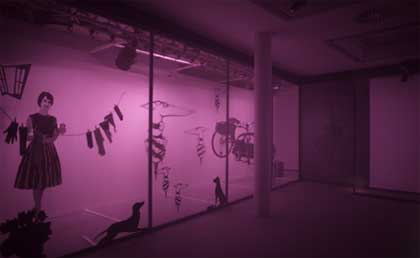 Angelo Benedetto went to Milan and checked out a spectacular exhibition i missed
Angelo Benedetto went to Milan and checked out a spectacular exhibition i missed
Are you optimistic about the future of the “interactive” city?
The “interactive city” is with no-doubt already here, even if it’s not looking so “sci-fi” at the moment or even remains quite hidden in fact. Shopping, transportations, banks, communication, voting, state management, etc. are already interactive-like experiences, even if most of them are consumer-driven, profiling and very functional experiences. At the moment, the interactive city is getting built mostly by the private market (and therefore private interests), a bit by the state and a bit by engineers. Nearly no architects or designers are involved in the conceptualization and realization of big public projects (at least I haven’t heard of it, please let me know if I’m wrong). This probably also because most designers and architects are a bit conservative and remain kind of blind to contemporary stakes or don’t get enough involved into it.
Anyway, I think that the “interactive city” will increase, still mostly driven by private interests at first (so no, I’m not so optimistic about its future). The “real” will certainly become more and more digitalized when all kind of computers, sensors and actuators will enter the building and urban design economy (see for example the ZigBee Alliance like consortium). Then we will get an enormous amount of data from these sensors (and to whom will belong those data, captured by which programs of which companies —proprietary or open– will become a big question!)
The city and buildings will probably first start to “speak” (i.e. “too hot” or “too many people” here, “too much traffic” or “too poluted” there, etc.) allowing for some kind of automated tasks, which is not a very interesting approach. But then, these data and spatial computing will also allow for crazy architectural projects and an all new condition for the contemporary space we will live in.
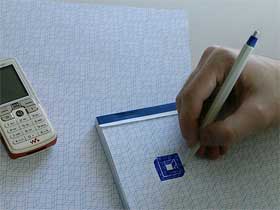 Do you plan to develop the VE project any further?
Do you plan to develop the VE project any further?
Variable_environment/ was a first research project between ECAL & EPFL with a special goal in mind: to make a first collaborative test and collect informations before the opening of a brand new EPFL-ECAL Lab. This laboratory will link permanently the two schools in the new big building that is getting renovated for ECAL in the west part of Lausanne, Switzerland.
So, from next October, this lab will be open and collaborations between the schools will increase. All kind of collaborations between design, architecture and sciences will be possible among many teachers and students (there will be no initial thematic limitations). Engineers from EPFL will follow courses in design (object, graphic, interaction), before, hopefully, designers start to follow some courses in computing and sciences.
The Variable_environment/ research has mainly served this “big picture” project for research and education in Switzerland. But in itself, the project will surely continue within this new academic context even if many opportunities are still open at the moment and if we don’t know exactly which ones will go further yet (we might go to preproduction with the (Web)Cameras, continue to work on the “AR-ready” Objects and the AiRtoolkit and/or do a European research project as a big extension to what has been started with the Rolling Microfunctions (in collaboration with the Royal College of Art / Tony Dunne).
Thanks Patrick!
Photo credit: Milo Keller, ECAL.
Participants of the Variable_environment/ project: Aude Genton, Tatiana Rihs, Bram Dauw, Adrien Rovero.

